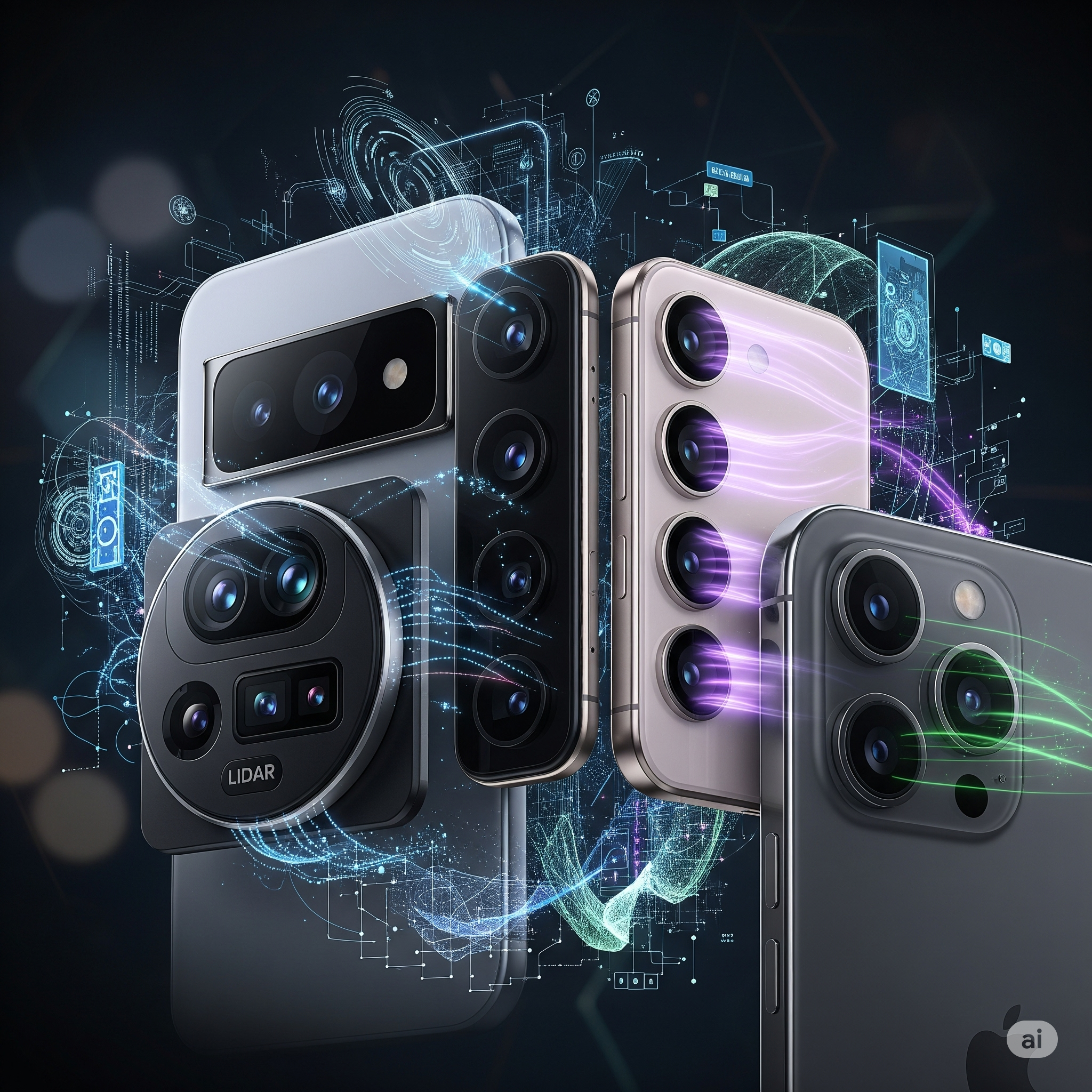The smartphone camera has long since evolved from a convenient afterthought to the primary imaging device for billions of people. As we move through 2025 and look ahead to 2026, the convergence of advanced hardware, computational photography, and artificial intelligence has pushed the boundaries of what’s possible, blurring the lines between dedicated cameras and the devices we carry every day. This is a landscape defined by fierce competition, with each major player employing a distinct strategy to capture the market.
The Contenders: A Three-Way Battle for Supremacy
The current smartphone camera market is largely dominated by a few key players, each with a unique approach to image-making.
The Computational Powerhouse: Google Pixel Series
Google’s philosophy has always been clear: software is king. The Google Pixel 9 Pro and Pixel 9 Pro XL continue this tradition with a camera system that, while featuring capable hardware, truly shines through its “computational magic.” The Pixel series excels at producing consistently excellent photos, particularly in challenging conditions. Its prowess in night and astrophotography remains class-leading, and the addition of sophisticated AI editing tools like Magic Editor and Visual Intelligence puts creative control directly in the user’s hands. While the main camera hardware might not always have the highest megapixel count, Google’s processing ensures every shot is a winner. For the user who wants a reliable, point-and-shoot experience with powerful post-processing capabilities, the Pixel remains an unmatched choice.
The All-Rounder: Samsung Galaxy S Ultra Series
Samsung’s Galaxy S25 Ultra is the Swiss Army Knife of mobile photography. It boasts a massive, versatile camera array, headlined by a staggering 200MP main sensor. This sensor, utilizing pixel-binning technology, delivers incredible detail and the flexibility to crop and edit without significant loss of quality. The S25 Ultra’s true strength, however, lies in its telephoto capabilities. With multiple telephoto lenses offering different levels of optical zoom (up to 5x), it provides the most comprehensive zoom experience in the market. This makes it an ideal choice for photographers who need to get up close to the action, whether for sports, wildlife, or distant subjects. The Galaxy S25 Ultra is a testament to the belief that more hardware, coupled with smart software, can deliver an unparalleled photographic range. Rumors for the Galaxy S26 Ultra suggest a further refinement of this approach, with a rumored wider f/1.4 aperture on the main sensor to further boost low-light performance.
The Filmmaker’s Choice: Apple iPhone Pro Series
Apple’s iPhone 16 Pro and iPhone 16 Pro Max are defined by their balance of hardware and software, and their unwavering focus on video. While its still photography is excellent, offering a more natural, true-to-life aesthetic compared to the often-saturated look of its competitors, the iPhone Pro series truly excels in motion. Its video capture is widely regarded as the industry benchmark, providing studio-quality results with impressive dynamic range and stabilization. The introduction of features like the new “Camera Control” button and enhanced cinematic modes further solidifies the iPhone’s position as the go-to device for mobile videographers and content creators. The unification of the camera systems across the Pro and Pro Max models, unlike previous generations, simplifies the buying decision, with screen size and battery life being the main differentiators.
The Rising Stars and Future Trends
Beyond the main three, other manufacturers are pushing the envelope with specialized technologies. Companies like Xiaomi and Vivo are delivering flagship devices with enormous 1-inch sensors, offering superior low-light performance and natural depth of field that rivals dedicated cameras. These phones, like the Xiaomi 15 Ultra and Vivo X200 Pro, often target advanced photographers with extensive manual controls and RAW shooting capabilities.
Looking ahead, several key trends are set to define smartphone cameras through to 2026:
- AI as an Imaging Backbone: Generative AI is moving beyond gimmicky edits. Expect to see AI integrated more deeply into the capture process, with real-time semantic processing that intelligently optimizes focus, exposure, and tone on a per-object basis for both photos and videos. This will lead to cleaner low-light shots, improved dynamic range, and more sophisticated background separation.
- Sensor Innovation: The quest for larger sensors continues, but with a focus on smarter design. In-sensor zoom and more compact periscope designs will become standard, providing seamless zoom coverage without the physical bulk. Technologies like multi-frame HDR and advanced quad-pixel binning will become commonplace, even in mid-range devices.
- The Return of Physical Controls: As seen with the iPhone 16’s Camera Control button, manufacturers are recognizing the value of physical, tactile controls. Expect to see more dedicated buttons and dials for a more traditional and intuitive photography experience.
The era of the smartphone camera as a mere convenience is long gone. In 2025 and 2026, these devices are not just taking pictures—they are intelligently interpreting the world and giving us the tools to capture it in ways that were once reserved for professional equipment. The best camera is no longer the one you own, but the one you have with you, and these devices are making that adage more powerful than ever.

